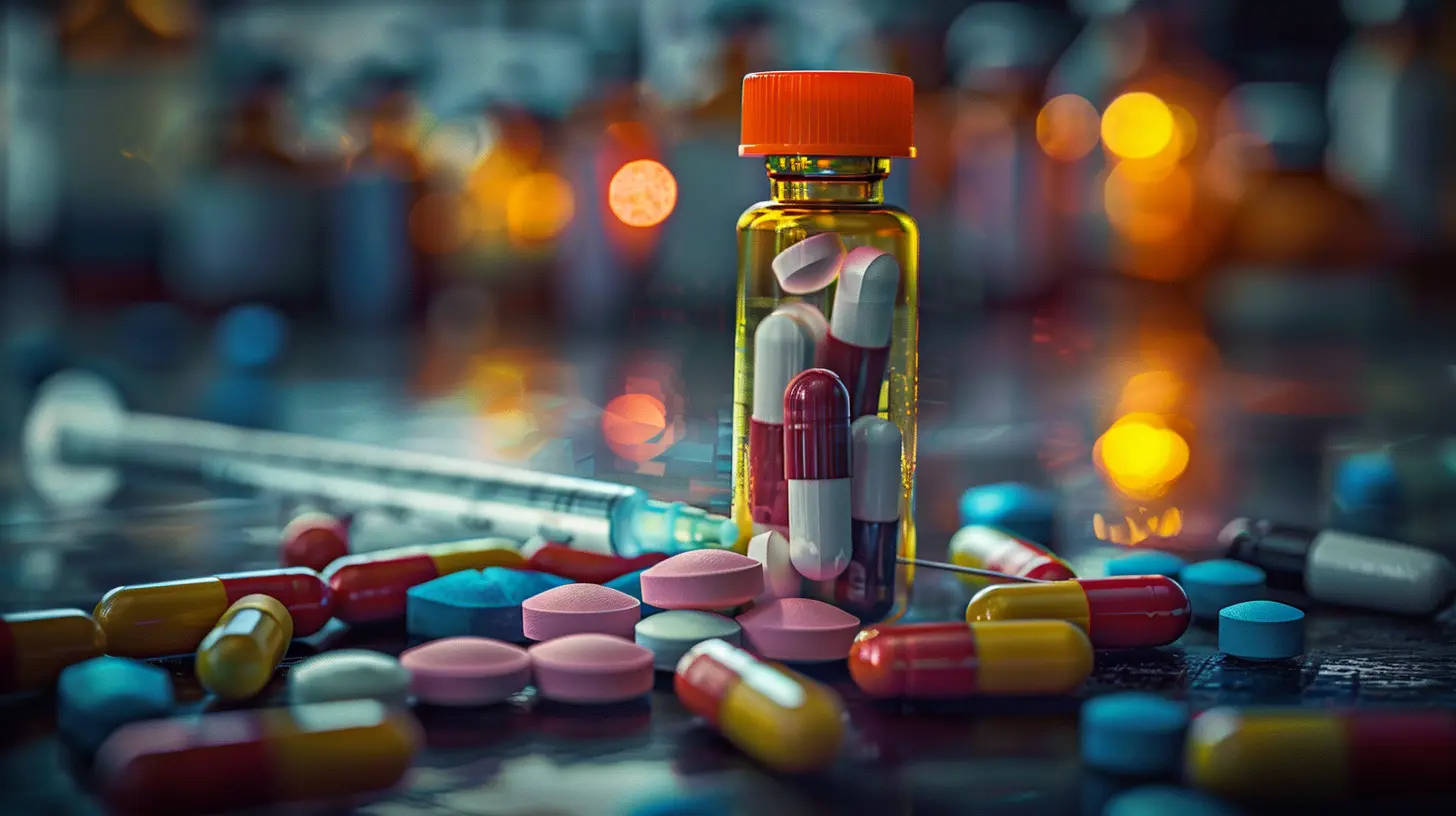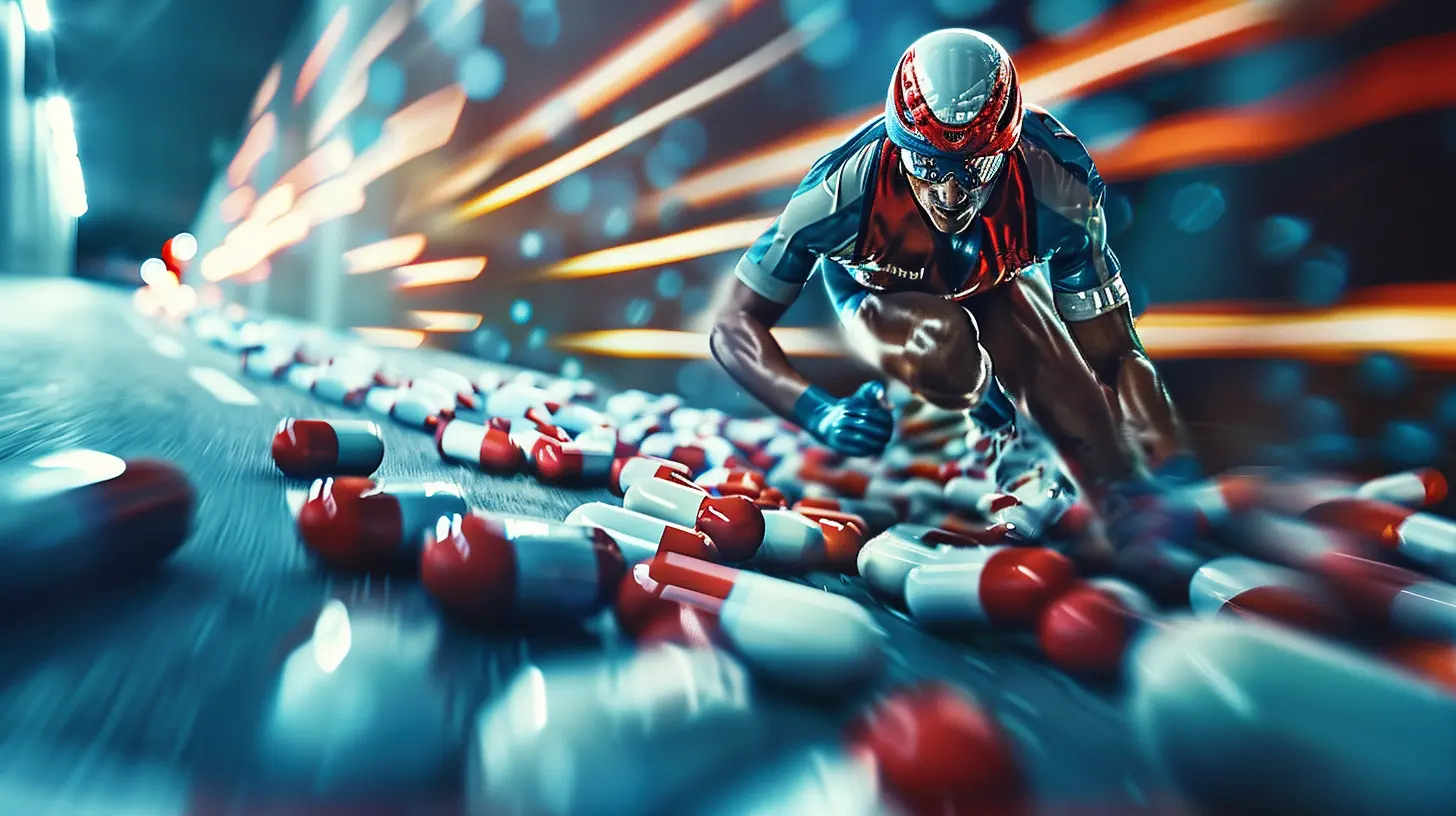Designer Drugs: The New Frontier in Doping
7 November 2025
Performance-enhancing drugs have long been a problem in competitive sports, but the game is changing. Athletes and their teams are no longer relying on traditional steroids or stimulants. Instead, they’re turning to something far more sophisticated—designer drugs.
These lab-engineered substances are built specifically to stay ahead of drug testing protocols, making them nearly impossible to detect. But what exactly are designer drugs? How do they work? And what does this mean for the future of doping in sports? Let’s break it all down.

What Are Designer Drugs?
Designer drugs are synthetic substances created to mimic the effects of known performance-enhancing drugs while avoiding detection. Unlike conventional steroids or stimulants, these compounds are chemically modified versions that aren’t officially recognized by anti-doping agencies.Because they don’t match existing banned substances, they can slip through standard drug tests undetected—at least until organizations catch up and develop new testing methods. This constant game of cat-and-mouse between drug designers and anti-doping agencies is what makes these substances so dangerous to the integrity of sports.

How Do Designer Drugs Work?
These drugs function just like traditional performance enhancers, but with a twist. They’re engineered at the molecular level to provide the same benefits as banned substances while evading detection.Types of Designer Drugs in Sports
1. Designer Steroids – Modified anabolic steroids that promote muscle growth and recovery while being chemically tweaked to avoid detection.2. Peptide Hormones – Synthetic peptides that stimulate the body’s natural production of hormones like human growth hormone (HGH) or erythropoietin (EPO), enhancing endurance, recovery, and overall performance.
3. Selective Androgen Receptor Modulators (SARMs) – A class of drugs that offer steroid-like benefits without the harsh side effects of traditional anabolic steroids. They’re often used as an alternative to steroids but are still under scrutiny.
4. Gene Doping Substances – These involve the direct manipulation of genes to stimulate muscle growth, endurance, and recovery. While still in its early stages, gene doping is a looming threat to fair competition.
Each of these methods provides a unique advantage to athletes, but they all share one common trait—they’re incredibly tough to detect.

Why Are Athletes Turning to Designer Drugs?
There’s one simple reason: they work. The pressure to perform at the highest level is intense, and when millions of dollars, sponsorships, and a legacy are on the line, some athletes are willing to take the risk.- Competitive Edge – The difference between winning and losing can be razor-thin. Even a 1% improvement can mean the difference between a gold medal and being forgotten.
- Reduced Detectability – Unlike traditional steroids or stimulants that have long detection windows, designer drugs are specifically engineered to fly under the radar.
- Faster Recovery – Sports today are more grueling than ever. The ability to recover quickly from injuries or exhaustion can add years to an athlete's career.
- Financial Incentives – Winning in professional sports can bring financial security for generations. For some, the risk of getting caught is outweighed by the potential rewards.

The Science Behind Avoiding Detection
Anti-doping agencies like the World Anti-Doping Agency (WADA) are constantly improving their testing methods, but they’re always one step behind. Why? Because designer drugs are created after the current banned substances list is established.Methods Athletes Use to Evade Detection
1. Microdosing – Taking extremely small amounts of a substance to gain its benefits without triggering a positive test result.2. Timing Strategies – Using drugs during training phases and stopping them just before competition when testing is most rigorous.
3. Masking Agents – Substances that interfere with drug tests, making banned substances undetectable.
4. Custom-Created Compounds – Since many designer drugs are brand new, they don’t yet appear on anti-doping organizations' banned lists, meaning they won’t trigger a positive test.
These techniques make enforcement incredibly difficult, leading to major concerns for the future of clean sports.
High-Profile Cases and Scandals
Despite the advanced nature of designer drugs, some athletes still get caught. History has proven that no matter how advanced the doping strategy is, anti-doping organizations eventually find a way to detect it.- BALCO Scandal (2000s) – One of the biggest doping scandals in history, involving high-profile athletes like Marion Jones and Barry Bonds. The Bay Area Laboratory Co-Operative (BALCO) provided athletes with undetectable designer steroids.
- Lance Armstrong (2010s) – While Armstrong’s doping involved more traditional methods like EPO, his case shed light on how deep doping strategies can go, even at the highest levels of testing and scrutiny.
- Russian Doping Scandal (2014-2019) – An entire state-sponsored doping program was exposed, showing just how systematic and organized doping can be on a national level. While not exclusively tied to designer drugs, this scandal demonstrated the lengths to which some are willing to go.
Each of these cases reinforced the need for stronger testing protocols and more advanced detection methods, but the problem persists.
The Impact on the Integrity of Sports
Doping doesn’t just affect the athletes who use it—it warps the entire competitive landscape. The trust between athletes, fans, and sports organizations is built on the belief that competitions are fair. When designer drugs enter the equation, that trust begins to erode.- Unfair Advantages – Athletes who use these substances gain an edge over those who choose to compete cleanly. This leads to unfair competitions and tainted victories.
- Health Risks – Many designer drugs haven’t been properly studied for long-term effects. Athletes who take them are essentially guinea pigs, exposing themselves to potential long-term damage.
- Damaged Legacies – Getting caught using performance-enhancing drugs can destroy an athlete's reputation forever. Look at Lance Armstrong—once a hero, now a cautionary tale.
Can Anti-Doping Agencies Keep Up?
The battle between those enforcing the rules and those trying to break them is never-ending. Organizations like WADA and the U.S. Anti-Doping Agency (USADA) are constantly developing new testing methods, but it’s a race against time.Emerging Detection Techniques
1. Biomarker Detection – Scientists are looking at biological markers, rather than specific drugs, making it harder for athletes to hide their use of performance enhancers.2. Longitudinal Testing (Athlete Biological Passport) – Instead of just testing for drugs, agencies are tracking athletes’ biological data over time, identifying inconsistencies that suggest doping.
3. Advanced Mass Spectrometry – A method capable of identifying even the tiniest traces of previously undetected substances.
While these techniques are promising, they still require constant updates to keep up with new designer drugs.
The Future of Designer Drugs in Sports
The use of designer drugs isn't going away anytime soon. As long as there are advantages to be gained, some athletes will always seek ways to push beyond the limits of legal performance enhancement.- Tighter Regulations – Expect stricter enforcement, more frequent testing, and longer bans for those caught using these substances.
- Better Collaboration – Anti-doping agencies are working with scientific communities and law enforcement to stay ahead of underground labs creating these drugs.
- Ethical Debates – Some argue that performance-enhancing drugs should be regulated rather than banned, creating a level playing field. While unlikely, this discussion is gaining traction.
At the end of the day, sports should be about talent, hard work, and dedication—not about who has access to the best lab in the world. For now, the fight against doping continues.
Final Thoughts
Designer drugs represent the next evolution of doping, making it harder than ever to maintain fair competition. The battle between drug designers and anti-doping agencies is escalating, and the stakes have never been higher.Athletes who choose to play fair are at a disadvantage, while those who turn to these substances risk not just their careers, but their health. As science advances, hopefully, so too will our ability to keep sports clean.
all images in this post were generated using AI tools
Category:
DopingAuthor:

Ruben McCloud
Discussion
rate this article
1 comments
Denise Long
Innovation breeds new ethics.
November 19, 2025 at 12:14 PM

Ruben McCloud
Absolutely, as new substances emerge, they challenge our ethical frameworks and necessitate ongoing discussions about fairness, safety, and responsibility in sports.


